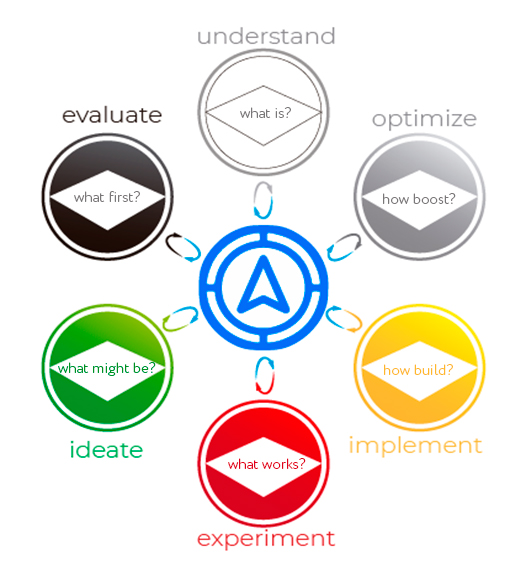Exploration Backpacks (Toolkits)
The Hiffi Exploration Backpacks are a collection of innovation toolkits. Each of these toolkits is comprised by tools and associated techniques that are the most basic devices for practical implementation.
A backpack is used by an innovator or agile team for a specific purpose that needs certain activity types with a predominant thinking mode (e.g. if creativity is needed, the “ideate” backpack provides tools and techniques to support this).
When faced with uncertainties, knowledge gaps, decisions to be made and value to be built and deployed, an innovator or innovation team can define a short.
More about it
The framework is designed to flexibly govern the configuration and arrangement of tools and associated techniques to fit the purpose, enabling a sequence to be swiftly adapted as new knowledge or unexpected events emerge along the innovation journey.
A technique is a structured way in which a function or task is performed. Several complementary techniques may be used to carry out a procedure (i.e. a series of tasks to achieve outcomes efficiently). These techniques may include from general purpose techniques such as facilitation techniques used in workshops (e.g. Clustering for making sense of data and information, Six Thinking Hats for ensuring focus and efficiency of collaboration, or Storytelling for engaging people) to more specialised ones such as Roadmapping techniques for aligning markets, strategy, products and technology.
A tool supports decision-making by facilitating the practical application of one or more techniques that intend to link technological or other resources and organization objectives. In the case of workshop-based activities, tools are typically represented in the form of structured templates or wall charts, which participants interact with using repositionable notes and pens (physical or digital). These charts might be supplemented by simple electronic representations (e.g. presentation slides, word processing documents and spreadsheets that are projected or distributed as handouts). Thus, a tool makes techniques tangible and enables them to perform functions guided by a procedure that steers participants towards outcomes.

